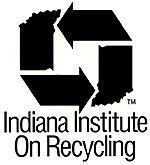
CASE STUDY NO. 9617
KEY WORDS REFRACTORY BRICK (FIREBRICK), REUSE
Aluminum Company of America-Warrick Operation
State Highway 66
P.O. Box 10
Newburgh, IN 47629
Contact: Jerry W. Morton, Senior Environmental Engineer. Tel: 812-853-4068. Fax: 812-853-4851.
Summary
ALCOA has perfected a reuse program that converts spent refractory brick--firebrick-- into new refractory products, avoiding the landfilling of 3,000 tons per year of used brick.
Action
Warrick Operations is a fully integrated aluminum smelting and fabricating facility producing rigid container sheet for the beverage and food can industries. An essential part of the production of primary aluminum involves the production of carbon anodes. Green anodes are stacked inside pits of a carbon bake furnace for baking (curing). The walls and floor surrounding the anode pits are constructed of firebrick and castable materials. Periodically, furnace walls must be replaced.
ALCOA estimates its carbon bake furnaces produce 3,000 tons per year of spent brick, one of the largest fractions of the plant's waste stream. Prompted by a corporate waste minimization program, the Warrick plant formed a waste minimization team and focused initially on alternatives to disposing of old firebrick. Team members were drawn from the production, procurement, maintenance, and environmental management functions. The team approached its supplier of refractory materials, Harbison-Walker Co., to explore the possibility of returning old brick for incorporation into other products and reuse by ALCOA.
A joint committee was formed by ALCOA and Harbison-Walker, and they developed fireclay brick mix specifications including reclaimed brick that proved to successfully substitute for raw material used in producing new refractory products: pit floor bricks, reused in pits of the anode bake furnace; castable mix, similar to cement and used to cap furnace walls; and floor paver bricks, used throughout the smelter and ingot plants and subject to molten aluminum temperatures up to 1500 degrees F. The floor paver brick, consisting of 70% spent refractory material, was chosen as the initial product to produce. As an incentive to Harbison-Walker, ALCOA, which purchases 500,000 paver bricks a year, agreed to specify this new product to meet its needs.
Payback
Warrick Operations had been landfilling about 1,600 cubic yards of old firebrick each year since operations commenced in 1983. Since the landfill located on company property, transportation costs have been small and tipping fees nil. Thus, transporting old brick to Harbison-Walker's Missouri location costs more than disposing on site in Southern Indiana. At the moment there are no net savings in buying back the new product. Over the long term, however, ALCOA expects to benefit in a number of ways. The newly formulated brick:
Finally, ALCOA expects to permanently avoid landfilling old bricks either on site or
off.
